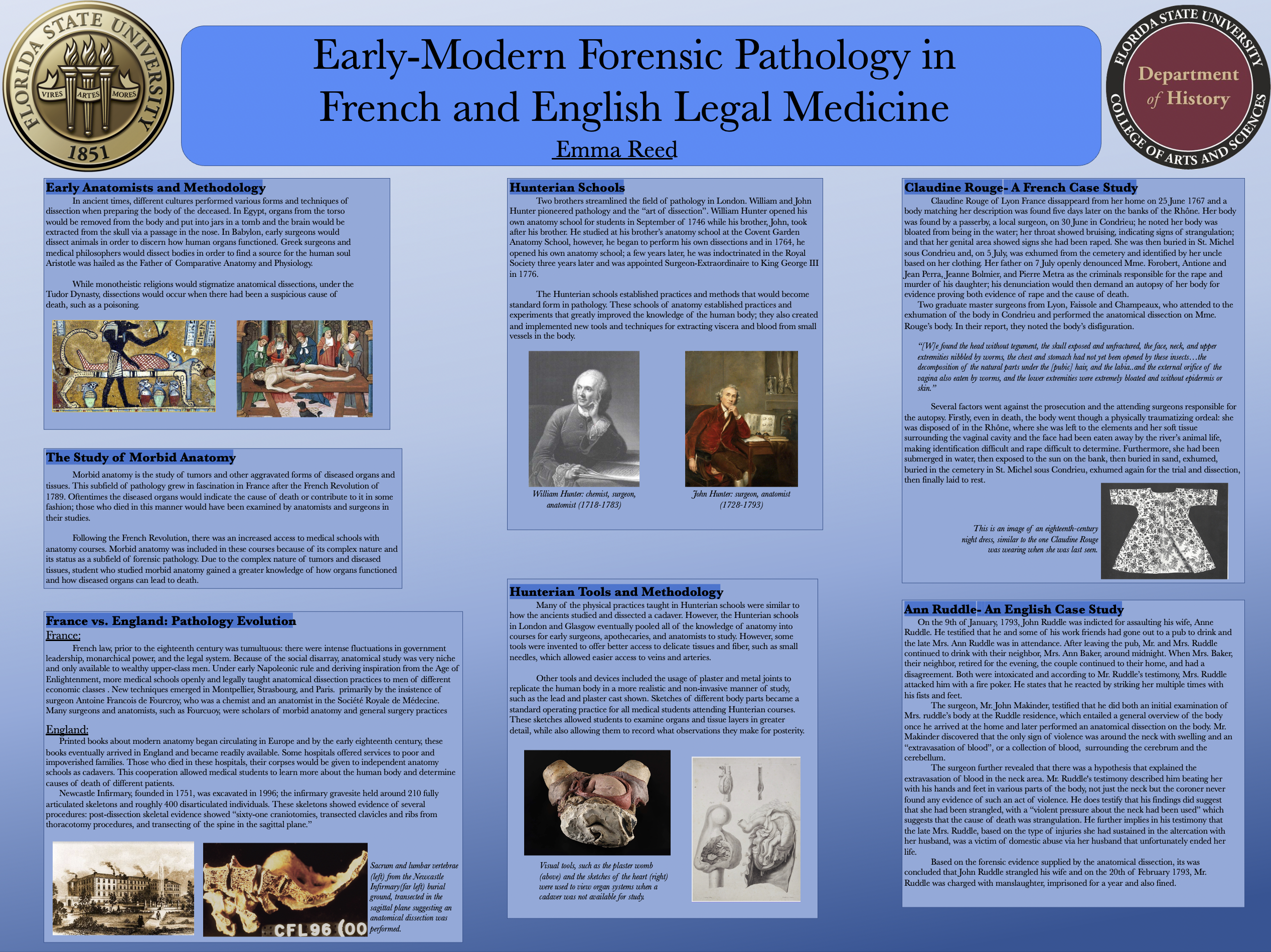Research Symposium
23rd annual Undergraduate Research Symposium, April 6, 2023
Emma Reed Poster Session 3: 2:45 pm - 3:45 pm/ Poster #105
BIO
Emma Reed is a senior majoring in History and minoring in Political Science. She specializes in early-modern European history and much of her research surrounds the interactions between social politics and the regency in England and its allies. Following graduation, she will be attaining her master's degree in Art History at Florida State University. She aims to work as a museum curator and hopes to get her Ph.D in Early Modern European Studies.
Early-Modern Forensic Pathology in French and English Legal Medicine
Authors: Emma Reed, Cathy McCliveStudent Major: History
Mentor: Cathy McClive
Mentor's Department: Department of History Mentor's College: College of Arts and Sciences Co-Presenters:
Abstract
Anatomical dissections became a foundational cornerstone in early forensic pathology and were key in the medico-legal world. Ancient medical philosophers, doctors, and embalmers in Egypt, Babylon, and Greece showed the early interest in the inner functions of the human body and archeological evidence illustrate an in-depth knowledge of human anatomy.
In Western Europe, dissections were performed on nobility as early as the 12th century, and rose in reliance in the 16th century, where they were used to determine if a nobleman had been assassinated based on the physiological damage from the poison. Anatomical dissections and forensic pathology in the eighteenth century had great advancements that had not been seen in the previous centuries of its practice and implementation and became a key foundation stone upon which forensic science would rest.
Despite dissections existing prior to the eighteenth century, early modern anatomical dissection studies emerged in greater numbers in the late eighteenth century. Interest in the precursor to modern autopsy grew exponentially, along with the interest in morbid anatomy and its close ties to anatomical dissection. France became one of the preeminent countries to study anatomy and morbid anatomy following the French Revolution. Simultaneously, England would become an equally prestigious country due to Hunterian schools and their rise in accessibility in the late eighteenth century. Two case studies from France and England will be compared against each other in order to show the difference in how early modern anatomists interpreted forensic evidence and how they presented their findings in legal proceedings.
Keywords: Early Modern Europe, Forensic Pathology, Legal Medicine, England, France


